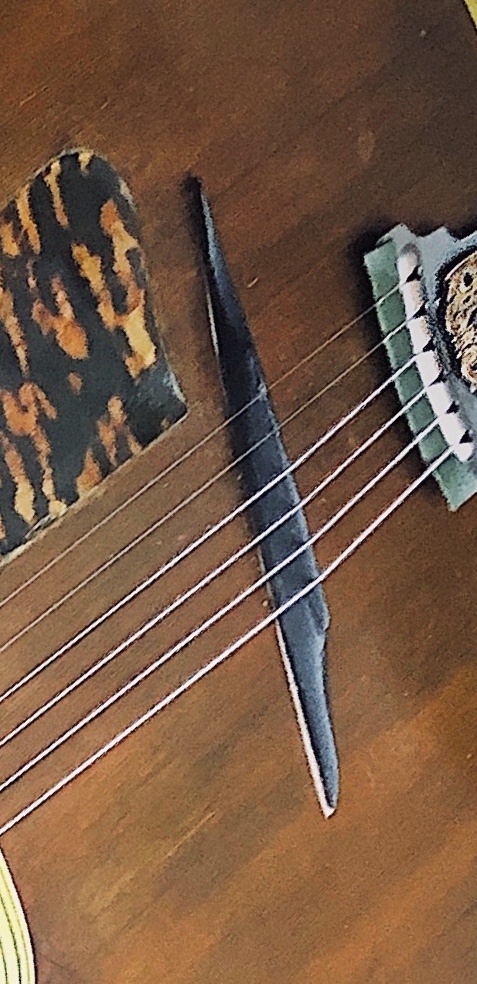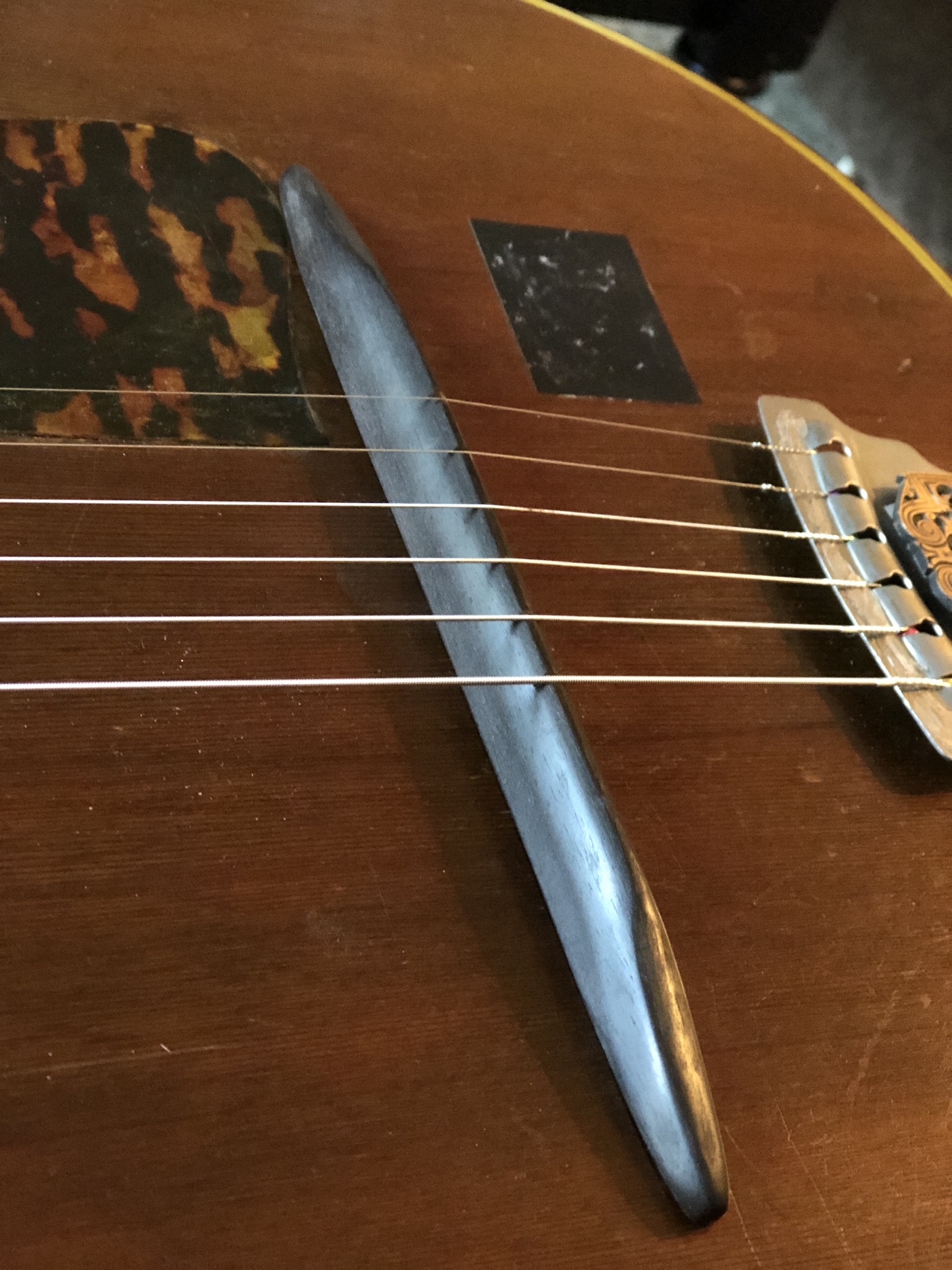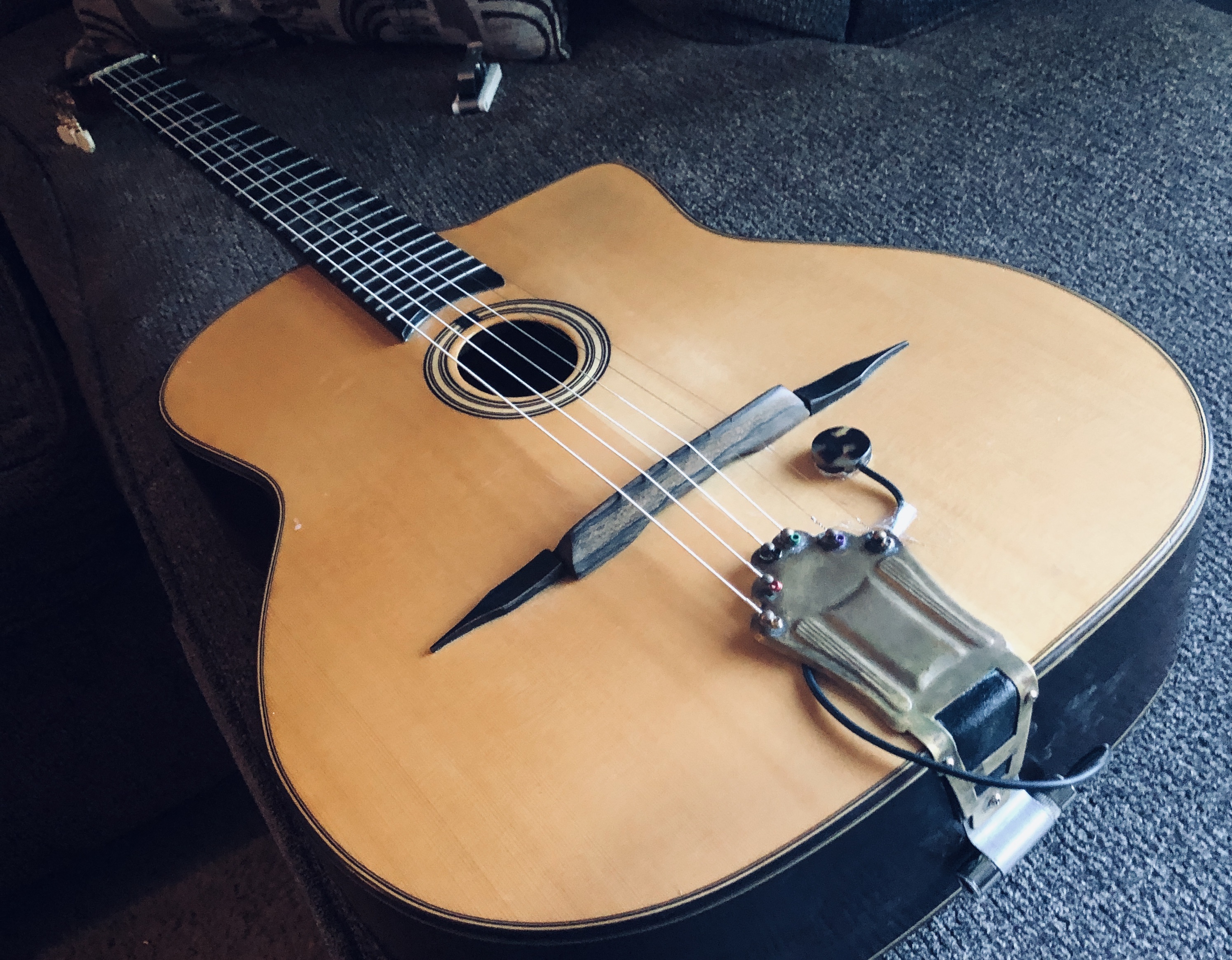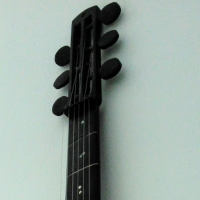DjangoBooks.com
Welcome to our Community!
Categories
- 20K All Categories
- 1.1K General
- 476 Welcome
- 59 Archtop Eddy's Corner
- 146 CD, DVD, and Concert Reviews
- 384 FAQ
- 26 Gypsy Jazz Italia
- 26 Photos
- 202 Gypsy Picking
- 21 Unaccompanied Django
- 15 Pearl Django Play-Along Vol.1
- 17 Gypsy Fire
- 45 Gypsy Rhythm
- 1.4K Gypsy Jazz University - Get Educated
- 130 Gypsy Jazz 101
- 224 Repertoire
- 218 History
- 707 Technique
- 51 Licks and Patterns
- 6 Daniel Givone Manouche Guitare Method Users Group
- 20 Eddie Lang Club
- 1.3K Gypsy Jazz Gear
- 800 Guitars, Strings, Picks, Amps, Pickups and Other Accessories
- 457 Classifieds
- 49 Recording
- 62 Other Instruments
- 18 Violin
- 5 Mandolin
- 22 Accordion
- 7 Bass
- 10 Woodwinds
- 346 Gypsy Jazz Events
- 142 North America
- 109 Europe
- 95 International
In this Discussion
Who's Online (0)
Bridge experiments with dense heavier design
 bopster
St. Louis, MOProdigy Wide Sky PL-1, 1940? French mystery guitar, ‘37 L-4
bopster
St. Louis, MOProdigy Wide Sky PL-1, 1940? French mystery guitar, ‘37 L-4
Due to cabin fever, along with a dose of dissatisfaction with guitar tone, I set out to create two bridges for 2 guitars. This first was a gypsy mystery, grande bouche that had a 7 1/2” long moustache bridge. It was not a hardwood, and it was a light color stained black.
For this one, I wanted better contact (it was total contact across the base), more energy transfer and this to sound like a 1930’s Selmer. I chose ebony, and not choosing any specific guidelines except those above, I came up with this:
Powerful, full tone, and gives me the sound I desired.
The second bridge, was for an Altamira M30 which had a replacement Dupont bridge. It looked more like rosewood, was hollowed out, and had feet dimensions that seemed to be like other well made guitars. The sound ended up being kind of dead after awhile, and I chose a Ziricote wood, dense, but less so than ebony. No hollowing, and wider feet.
This brought out a greater tightness, bright but yet not unbalanced.
After reading many of the posts on bridges and how design/weight/materials etc. affects tone, I was surprised at the sounds I was getting.
Anyone else have stories that seem to go against conventional wisdom?















Comments
Interesting!
I wonder if anyone has experimented with a carbon fibre bridge?
I have read that CF resonates more powerfully than just about any other material...?
Edgar Degas: "Only when he no longer knows what he is doing does the painter do good things.... To draw, you must close your eyes and sing."
Georges Braque: "In art there is only one thing that counts: the bit that can’t be explained."
Interesting, yes. About 10 years ago I made several ultra-lightweight ebony bridges for a Favino I had where I cut away all the wood I thought I could get away with and still retain structural integrity. I went so far as to hollow out the feet with a dremel and removed wood from below the "saddle" - both horizontal and vertically. I wanted to "air out" the tone I was getting with the regular bridge. I liked the results and used that bridge the rest of the time I had the guitar. Surely others have tried making experimental bridges - let's hear about it.
Hey Will I've always thought light and stiff as possible is best in general so I would think a CF bridge would work well.
Paul, did you use hand tools only? How long did it take you per bridge? I have several kinds of woods that will someday become bridges...
So your vintage mystery sounded pretty good already, you like it even better?
Great work!
@Buco - yep. Rasp, files and sanding bits on my drill. It took about 3 evenings of work, for each, shaping and fitting it to the body. I do like the sound of both guitars better. I’ll record and post something tomorrow.
Hey Paul, what is the weight of the old and new bridges? Thx
@Bones Jaw dropping difference:
Altamira:
Dupont bridge - 15g; mine - 25g
1940 grande bouche
original bridge - 7g; my bridge - 24g
Wow, that's supposed to be heavy for a bridge! Sure is against the conventional wisdom. Did you do back and forth comparing? I believe your ears though, I've attested they're good quality ears!
Interesting. Thanks for the info. Well you are probably changing the natural frequency and the response of the guitar a bit by doing that.
The video is kinda rough, but the audio is true. New strings.